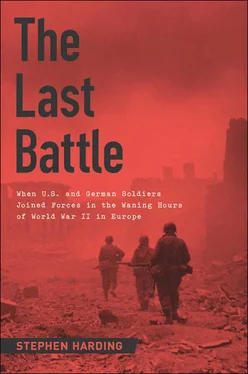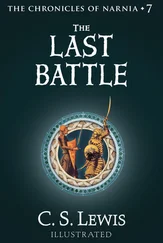14. Some sources give the name as Besotten Jinny , but the version used in this volume is the one most commonly cited. The actual origin of the name is lost to history, but it may be a reference to the nickname of Lee’s first wife, Virginia.
15. LST stands for “Landing Ship, Tank.” The large, flat-bottomed vessels carried their cargo of armored vehicles right up onto the beach and offloaded them through large bow doors. The modern U.S. Army uses an even larger variant known as an LSV (Logistics Support Vessel) to move armored vehicles and other cargo.
16. See Francis, History of the 23rd Tank Battalion , 18, and Ferguson, Hellcats , 57–60.
17. Montgomery Cunningham Meigs, a 1940 graduate of West Point, was twenty-four when he was killed. The scion of a family with a long military history, Meigs was the son of a naval officer. His own son, the future General Montgomery C. Meigs, was born one month after Lt. Col. Meigs’s death.
18. Operations in Germany, 1–10 May 1945 . For a full account of the Herrlisheim battle, see Edward Monroe-Jones’s excellent Crossing the Zorn .
19. The “Easy 8” moniker came from the fact that the M4A3(76)W was also referred to as the M4A3E8. Second-generation examples of the Easy 8 were built with the Horizontal Volute Spring Suspension (HVSS) system and had wider tracks and other detail changes.
20. Earlier Sherman models had carried the projectiles in the side sponsons above the tracks; the rounds would almost always detonate if the hull was breached by antitank fire, so in later-model M4s the main-gun ammunition was stored in bins under the turret floor. The bins were surrounded by a water-antifreeze mixture that greatly reduced the risk of the ammunition cooking off and catastrophically destroying the tank.
21. General Orders 33, HQs., 12th Armored Division, April 19, 1945. Lee was also awarded the Purple Heart for wounds received sometime in March 1945, but the nature of the wounds and exactly how and where they were inflicted remain unclear.
22. As World War II ground on in Europe, the army needed immediate reinforcements in its infantry units. When the numbers of white soldiers pulled from other tasks failed to fill the gap, the still-segregated army allowed black soldiers in Europe-based service and support units to volunteer. Some two thousand men did, and after truncated infantry training in France they were allocated to white-officered units in the 12th and 14th Armored divisions. While the black soldiers in the 17th AIB’s Company D proved themselves to be both brave and highly competent infantrymen, they did not—as some sources (including the author’s own 2005 magazine article) have erroneously indicated—participate in the Schloss Itter operation.
23. Operations in Germany, 1–10 May 1945 , 84.
24. A few days earlier, as the 103rd had moved into Garmisch-Partenkirchen in southern Germany, Kramers had led his group of jeepborne civil-military government soldiers up the driveway of a particularly imposing villa. Intending to use the home as a command post, Kramers informed the residents that they had fifteen minutes to pack a single bag and leave. An elderly man walked slowly out of the house and up to Kramers, who was bent over the hood of his jeep studying a map. “I am Richard Strauss, the composer,” the man said, proffering part of the manuscript of his Der Rosenkavalier and a certificate proclaiming him to be an honorary citizen of Morgantown, West Virginia. Kramers, a fan of classical music in general and Strauss’s work in particular, decided he could find a suitable command post elsewhere. After posting an “Off Limits” sign in front of Strauss’s villa, Kramers and his men moved on. This incident is recounted in Alex Ross’s excellent The Rest Is Noise , 373–374. Kramers also related this event to the author in a June 8, 2012, telephone interview. And, according to a postwar history of the 103rd Infantry Division, Strauss’s son, Franz, his Jewish wife, and their two teenaged sons had spent the entire war in the composer’s home. The elder Strauss told Kramers and his men that Franz’s wife “was the only free Jewess in Germany during Hitler’s reign.” Her safety, it seems, stemmed from the fact that Strauss’s popularity with the German people was so great that even the Nazis couldn’t touch them. See Mueller and Turk, Report After Action , 140.
25. The actual term used in the Free French forces was Enseigne de vaisseau de première classe, but since Lutten was attached to an American unit, he went by “lieutenant.”
26. Levin, “We Liberated Who’s Who,” 98.
27. Pronounced “Simzik.”
28. The basic account of Lee’s initial recon to Wörgl and Schloss Itter is drawn from Operations in Germany, 1–10 May 1945 , 68–70, and from Resistance and Persecution in Austria , 594–598.
29. Schrader, “Erinnerungen, Gedanken, Erkenntnisse,” 36.
30. It remains unclear which two men they were.
31. Demey, Paul Reynaud , 144.
32. Daladier, Prison Journal , 337.
33. Unfortunately I have been unable to determine the names of the other two members of Boche Buster ’s crew.
34. The account of the 753rd’s actions in support of the Schloss Itter operation is drawn from Battalion Diary for Month of May 1945 , 1–3, and Company History, 1–8 May 1945 , 1–2.
35. Designed during World War I by John Browning, the Browning Automatic Rifle was chambered for a .30–06 round. In World War II the Model 1918A2 was normally the sole automatic weapon in each eight-man infantry squad.
36. Interview with Arthur P. Pollock.
37. While not perhaps as lethal as the famed German 88mm anti-aircraft/ antitank gun, the more mobile 75mm Panzerabwehrkanone (Pak) 40 was more than capable of knocking out a Sherman under most circumstances.
38. Interview with Pollock.
39. Tall, narrow openings in a castle’s defensive walls originally intended to allow defenders to fire arrows at attackers while remaining protected. The embrasures were wider on the inside than on the outside, allowing the defender a wide field of fire despite the narrowness of the exterior opening.
40. A common feature in medieval castles, a sally port allowed the troops of the castle’s garrison to mount quick raids outside the walls without having to open the main gate.
41. Interview with Edward J. Seiner.
1. Introduced in 1942, the Maschinengewehr-42’s readily identifiable sound resulted from a rate of fire of more than one thousand rounds per minute.
2. The red lens provides illumination in low light without revealing the user’s position as a white light would.
Читать дальше












